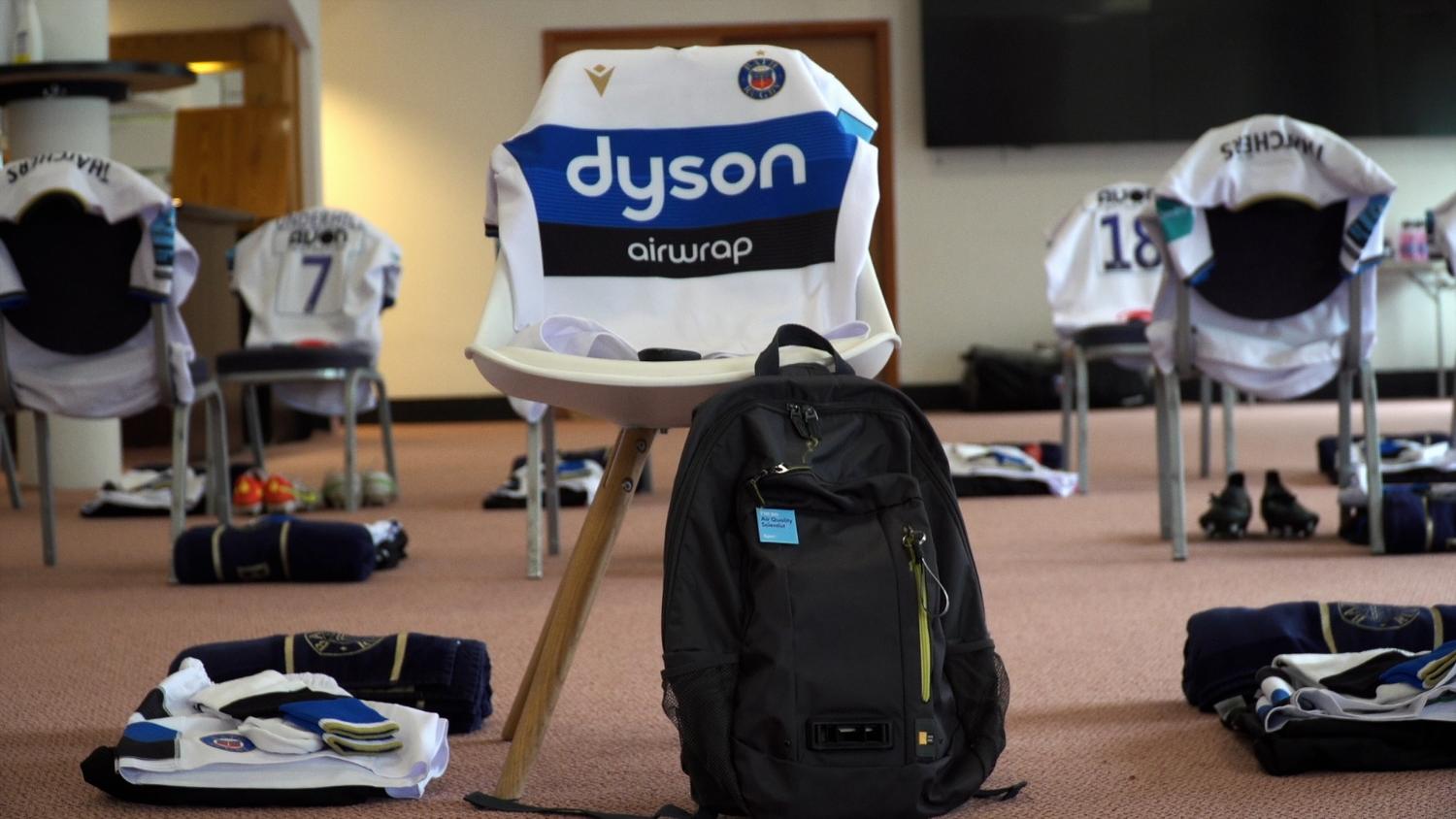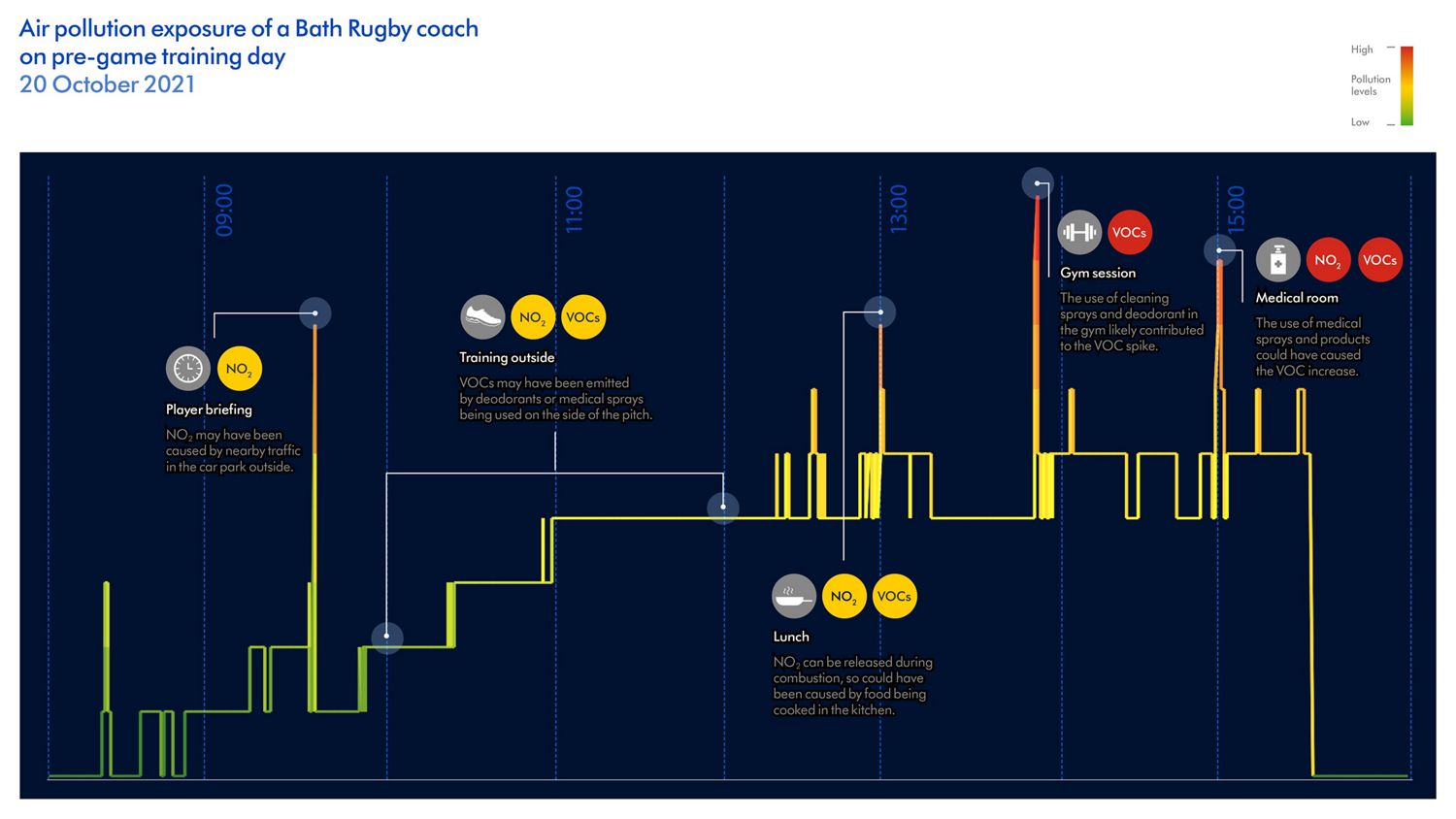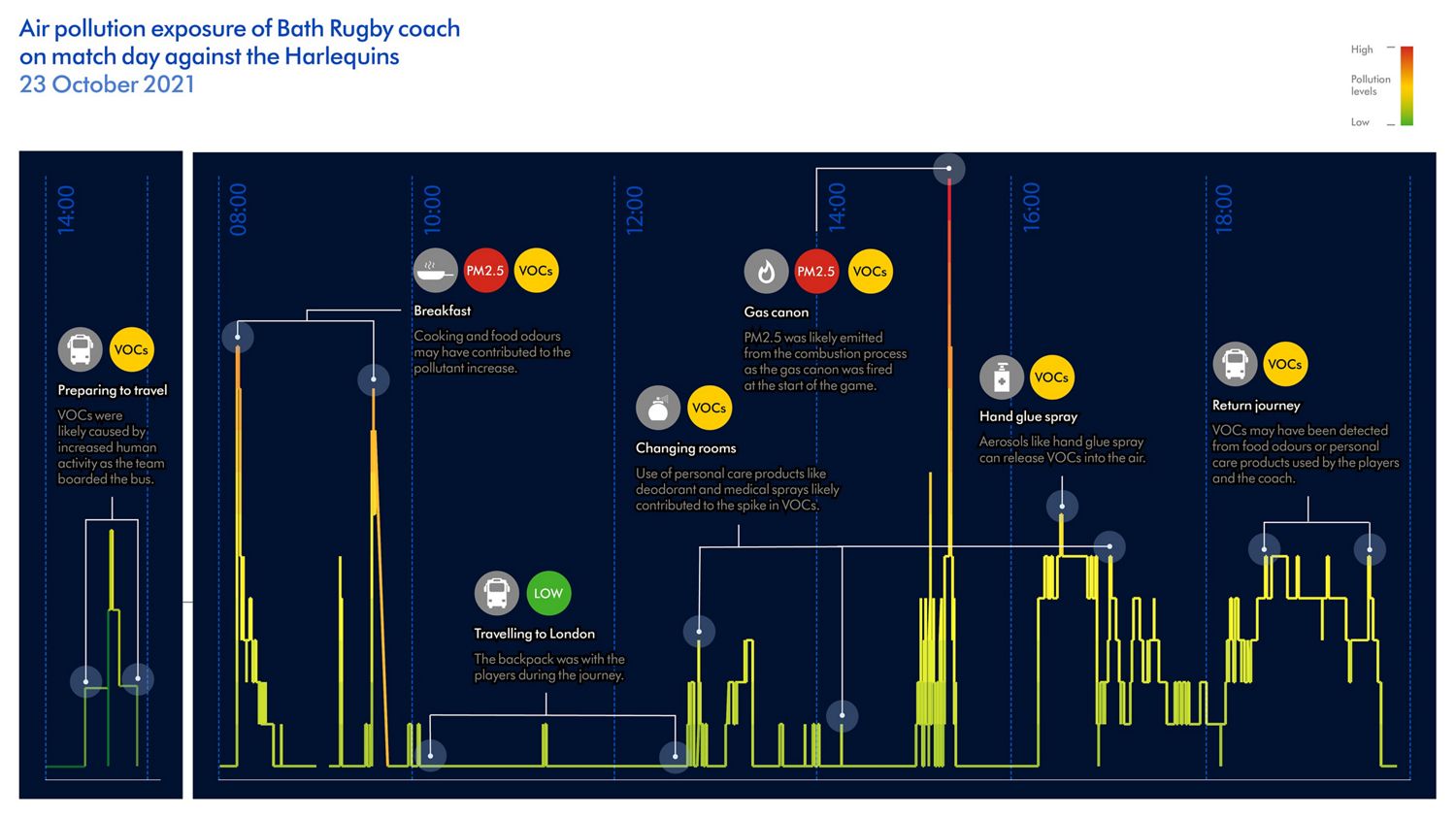-


Dyson air sensing data reveals pollution exposure of rugby athletes
- The highest pollution spikes were detected when training in the gym and from the pyrotechnic display on game day.
- Players were surprised by the data findings, admitting that pollution exposure was not previously considered as part of wider performance approach.
April 13, 2022
After teaming up, Dyson and Bath Rugby reveal the air pollution findings from Dyson's latest air quality project, monitoring the pollution the Bath Rugby team were exposed to during training and a game day.
To tie in with the Six Nations, the personal pollution exposure of the players was measured using Dyson’s air quality backpack, which monitors pollution levels while on the move. Data indicated pollution spikes during routine training activities like weightlifting in the gym and the pyrotechnic display on game day itself.
“Everything comes down to the team’s output come game day, and training is built up of a number of components to give them the best chance of success. I think air pollution is something that we should be considering and something that could be very important for us moving forward. It’s the one percenters. If you can tick them off, they’re probably worth ticking off.”
- PJ, Head of Stength & Conditioning at Bath Rugby
Dyson, the title partners of Bath Rugby club since 2014, initiated the project to explore the air pollution exposure of high performing athletes. Reworking existing technology used in Dyson purifiers, the backpack is armed with on-board sensors, a battery pack and GPS and has been used globally to raise awareness and investigate personal exposure to air pollution.
The Results
The highest pollution spike identified was from the pyrotechnic display which went off at the beginning of the game. With the gas canons igniting to produce thick smoke, levels of PM2.5 recorded by the air quality backpack momentarily reached as high as 4000ug/m³. While the levels recorded were high, it was a short pollution event lasting less than a minute so overall exposure time was low.
“When we talk about air pollution exposure, it’s not always about removing the source of those pollutants. Depending on where your pollution source is, you may need a different solution. Purification can limit pollution exposure indoors, using filtration to capture pollutants and project cleaner air around the room. In both indoors and outdoors environments, reducing the amount of time you are in close proximity to a pollution event is a good way to lower your overall exposure and in some cases this might mean physically moving away from the pollution source.”
- Sam Railton, Dyson Lead Design Engineer in New Product Innovation
-
Peaks in pollution were identified when the players trained in the gym and spent time in the medical room during recovery periods. Volatile Organic Compounds (VOCs), which are commonly released from cleaning sprays and aerosolized personal care products, were detected, increasing by 40 times during the gym session- the highest VOC pollution peak identified that day.
Higher pollution levels were also identified when the players were having lunch at the training ground and breakfast on game day. NO₂ and PM2.5 can be released during the combustion process while cooking, which may have contributed to these spikes. Overall, pollution levels while travelling between locations remained relatively low, thanks to the avoidance of peak travel times and busy public transport hubs which can often contribute to heightened pollution.
“Air pollution is a global problem and impacts the air we breathe both indoors, outdoors and on the move. Taking small measures in our daily routines - such as avoiding high traffic areas or adapting our cooking methods - can all have a positive impact on reducing our personal exposure levels. Simultaneously, we should all engage in supporting the wider environment against pollution, such as reducing our car usage, which contributes to the generation of such pollutants.”
- Hugh Montgomery, OBE Professor of Medicine and Director of the Centre for Human Health and Performance at University College London.
Dyson air quality backpack
The air quality backpack was initially developed by Dyson engineers for the Breathe London study with King’s College London and the Greater London Authority. Engineers designed the portable air monitoring device to be smaller and reflect existing sensing technology used in Dyson air purifiers, whilst still accurately capturing PM2.5, PM10 and VOC and NO2 exposure.
Previous projects featuring Dyson’s air quality backpack include a global study investigating personal pollution levels during the COVID-19 lockdown and monitoring exposure during smog season in Delhi.



